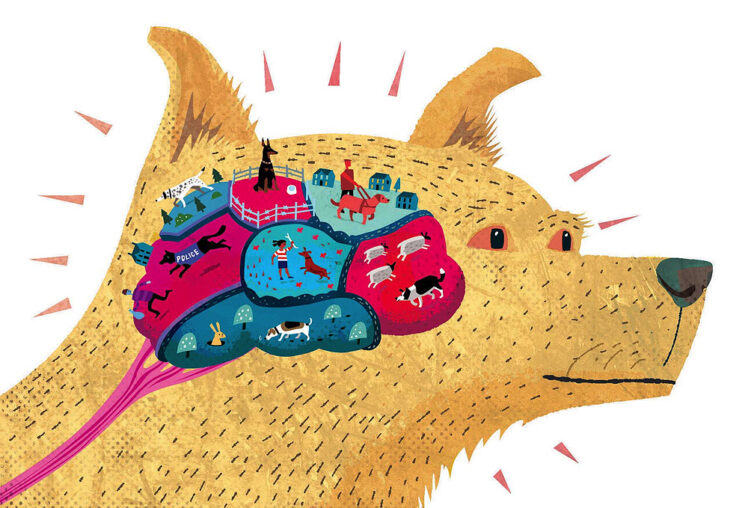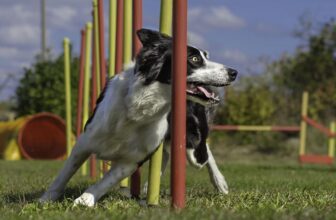The Impact of Artificial Intelligence on Pet Behaviour Analysis

Artificial Intelligence (AI) is rapidly changing the way we understand and interact with our pets. One of the most promising areas of AI research is its ability to analyse pet behaviour, which can lead to a better understanding of our furry friends and improved animal welfare. In this article, we will explore how AI is impacting pet behaviour analysis and its potential future applications.
Pets play an important role in many people’s lives, providing companionship and emotional support. However, understanding their behaviour can be challenging, as animals are not able to communicate their needs and feelings in the same way that humans do.
Pet behaviour experts rely on various methods to study animal behaviour, such as observation, questionnaires, and physiological measurements. However, these methods can be time-consuming, and costly, and may not provide a complete picture of the animal’s behaviour.
AI for Pet Behaviour Analysis
AI is a powerful tool for analysing pet behaviour, as it can quickly process large amounts of data and identify patterns that would be difficult for humans to detect. There are several ways in which AI is being used to analyse pet behaviour, including:
Video Analysis

Source: waltham.com
AI can be used to analyse videos of pets to identify specific behaviours, such as aggression, playfulness, and stress. This can help pet behaviour experts identify patterns of behaviour that may indicate a problem, such as separation anxiety or aggression towards other animals
Audio Analysis
AI can also be used to analyse the sounds made by pets, such as barking or meowing. This can help experts identify patterns of behaviour that may indicate stress or anxiety, such as excessive vocalization.
Wearable Technology
Wearable devices, such as smart collars, can collect data on a pet’s activity levels, location, and sleep patterns. AI can be used to analyse this data to identify patterns of behaviour that may indicate a problem, such as lack of exercise or changes in sleep patterns.
Visit Petstop.com to buy advanced and modern-day security fencing systems for your pets to eliminate any potential threat from unwanted sources, especially while you or nobody is there around.
Brain Activity

Source: harvardmagazine.com
With the development of neuroimaging techniques, AI can be used to study the neural basis of pet behaviour. This can help experts understand the underlying mechanisms that drive behaviour, such as reward-seeking or fear.
Potential Applications
AI has the potential to revolutionize the way we understand and interact with our pets. Some of the potential applications of AI in pet behaviour analysis include:
Improving animal welfare: By using AI to identify patterns of behaviour that may indicate a problem, experts can intervene to improve the animal’s welfare. For example, if a pet is showing signs of separation anxiety, AI can help identify the cause and recommend the appropriate treatment.
Training and Behaviour Modification
AI can be used to identify the most effective training techniques for pets, as well as to monitor progress and adjust the training plan as needed.
Breed-Specific Behaviour

Source: science.org
AI can be used to analyse patterns of behaviour in different breeds of pets, which can help experts understand the unique characteristics of each breed and provide more tailored care.
Pet-Human Interaction
AI can be used to analyse patterns of behaviour in pet-human interactions, which can help experts understand how pets respond to different types of human behaviour and provide more effective care and training.
AI is rapidly changing the way we understand and interact with our pets. Its ability to analyze pet behaviour has the potential to revolutionize the field of pet behaviour analysis, leading to improved animal welfare and a deeper understanding of our furry friends. However, further research is needed to fully realize the potential of AI in pet behaviour analysis.
As AI technology continues to evolve, it will likely become an increasingly important tool for pet behaviour experts, allowing them to better understand the needs and behaviours of our pets. This will lead to better training, behaviour modification, and treatment for our pets, ultimately improving their overall well-being and quality of life.

Source: waltham.com
One of the most promising applications of AI in pet behaviour analysis is the use of machine learning algorithms. Machine learning algorithms can be trained on large datasets of pet behaviour, allowing them to identify patterns and predict behaviour with high accuracy. This can be especially useful for identifying early signs of behavioural problems, such as aggression or anxiety, and providing early intervention.
AI-powered sensors and cameras can also be used to monitor pet behaviour in real time, providing a more accurate and comprehensive picture of their behaviour. This can be especially useful for pet owners who have busy schedules and are unable to observe their pets throughout the day. Additionally, AI-powered cameras can be used to monitor pet behaviour in shelters and rescue centres, helping staff to identify and address behavioural issues promptly.
Another potential application of AI in pet behaviour analysis is in the field of veterinary medicine. AI can be used to analyse data from various medical tests, such as bloodwork and X-rays, to identify patterns and predict potential health issues. This can help veterinarians to make more accurate diagnoses and provide more effective treatment for pets.
Conclusion
While AI has the potential to revolutionize the field of pet behaviour analysis, some challenges must be overcome. One of the biggest challenges is the lack of standardized data, which makes it difficult for researchers to compare results from different studies.
Additionally, there is a lack of regulation and oversight in the field of AI in pet behaviour analysis, which could lead to the development of inaccurate or biased algorithms. In conclusion, the impact of AI on pet behaviour analysis is significant and has the potential to revolutionize the field.
It can improve animal welfare, provide a more accurate and comprehensive understanding of pets’ behaviour, and assist in training and behaviour modification. However, further research and development are needed to overcome the current challenges and fully realize the potential of AI in pet behaviour analysis.



